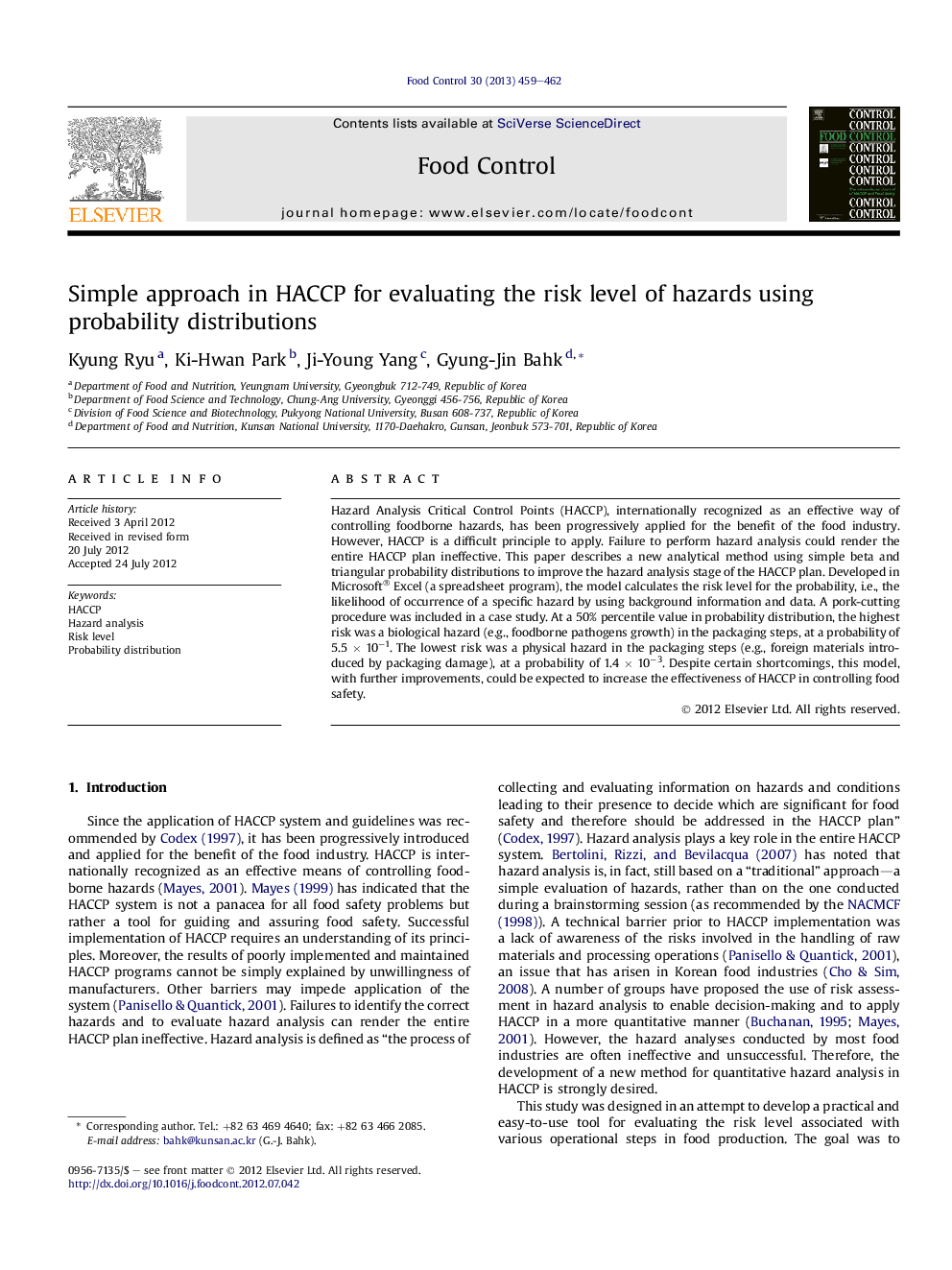| Article ID | Journal | Published Year | Pages | File Type |
|---|---|---|---|---|
| 4559451 | Food Control | 2013 | 4 Pages |
Hazard Analysis Critical Control Points (HACCP), internationally recognized as an effective way of controlling foodborne hazards, has been progressively applied for the benefit of the food industry. However, HACCP is a difficult principle to apply. Failure to perform hazard analysis could render the entire HACCP plan ineffective. This paper describes a new analytical method using simple beta and triangular probability distributions to improve the hazard analysis stage of the HACCP plan. Developed in Microsoft® Excel (a spreadsheet program), the model calculates the risk level for the probability, i.e., the likelihood of occurrence of a specific hazard by using background information and data. A pork-cutting procedure was included in a case study. At a 50% percentile value in probability distribution, the highest risk was a biological hazard (e.g., foodborne pathogens growth) in the packaging steps, at a probability of 5.5 × 10−1. The lowest risk was a physical hazard in the packaging steps (e.g., foreign materials introduced by packaging damage), at a probability of 1.4 × 10−3. Despite certain shortcomings, this model, with further improvements, could be expected to increase the effectiveness of HACCP in controlling food safety.
► New method proposed for evaluating the risk level of hazards in HACCP. ► Beta and triangular probability distributions used. ► The proposed model in Microsoft® Excel can calculate. ► Four procedures of pork processing were included in a case study.
